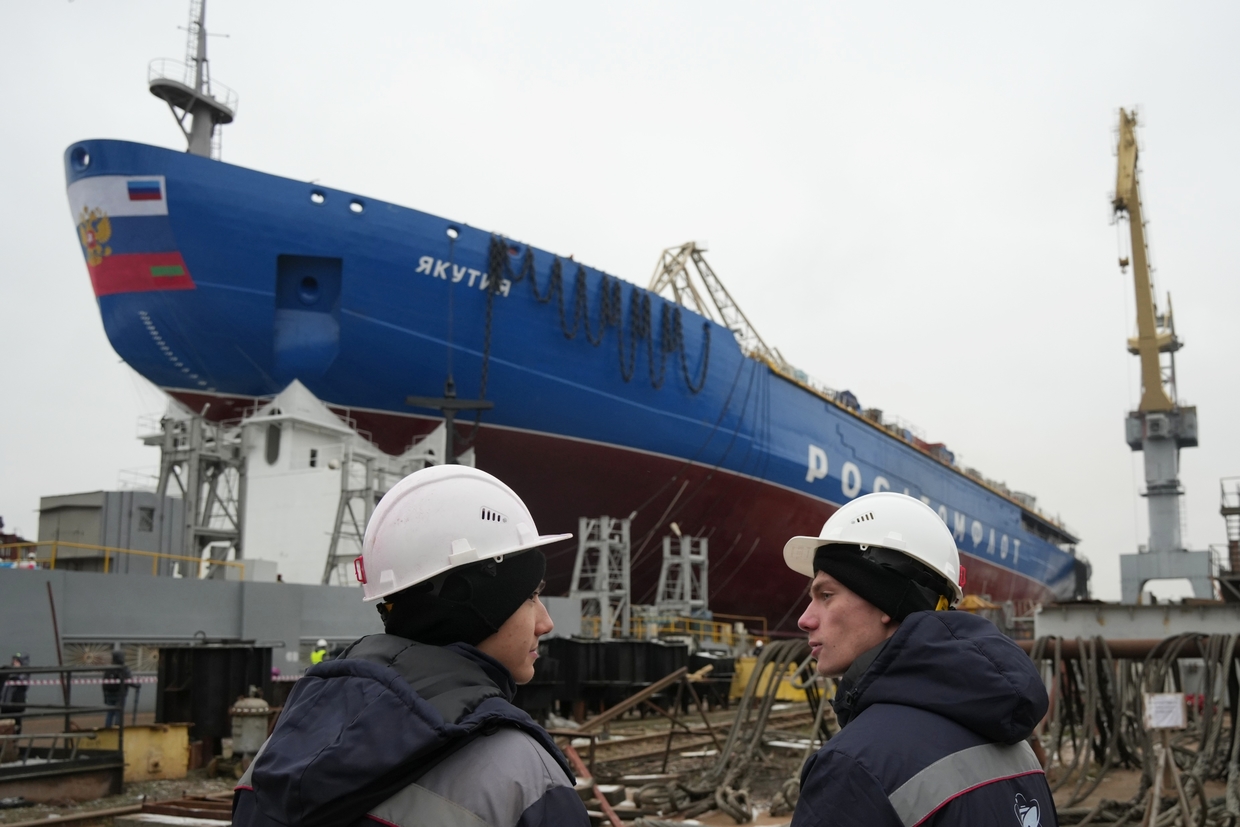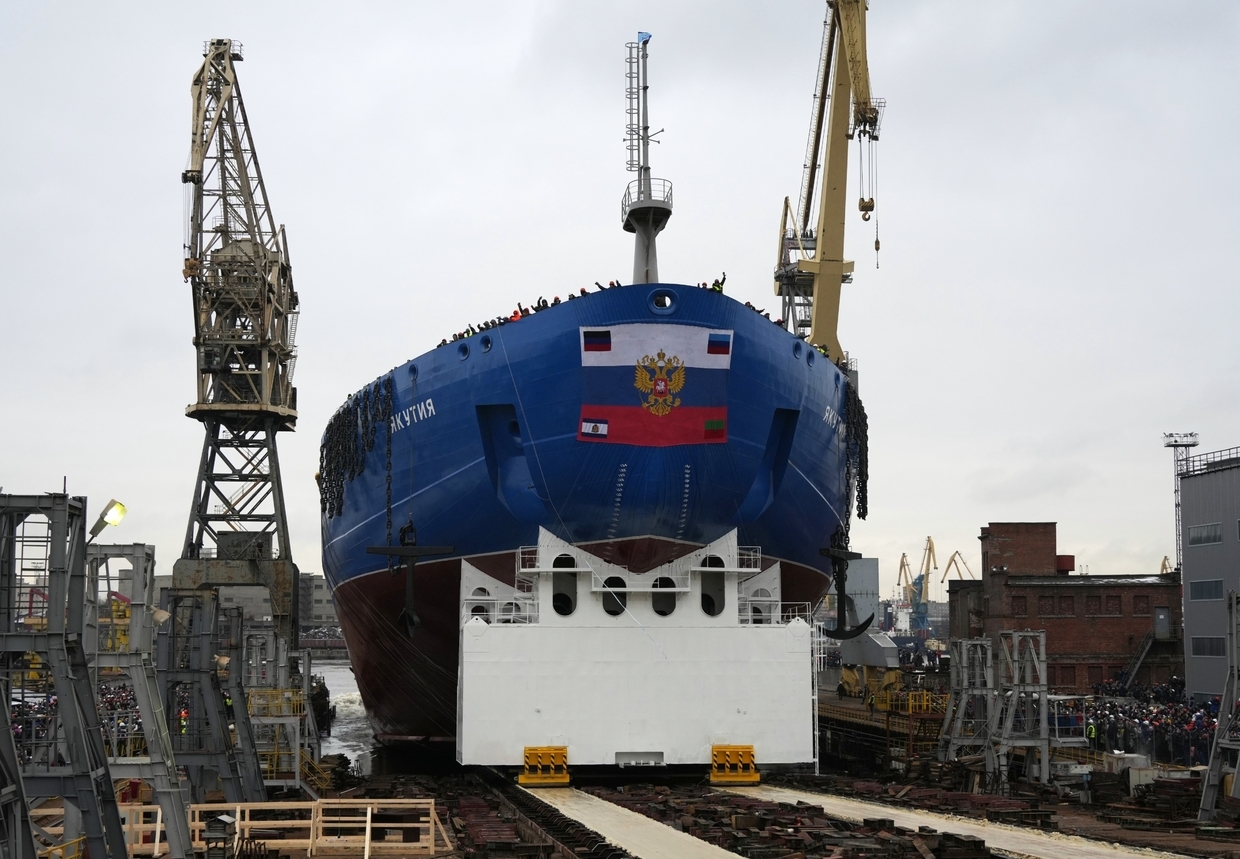Russia floats new nuclear-powered icebreaker
A new nuclear-powered icebreaker has been launched from a shipyard in St. Petersburg. ‘The Yakutia’ is the fourth ship of the Arktika series, which Russia is building to boost navigation along its Northern Sea Route.
The ship was launched at the Baltic Shipyard on Tuesday in a ceremony, which also included the raising of the national flag on ‘the Ural,’ the third icebreaker of the same design.
‘The Ural’ was launched in 2019 and is scheduled to complete sea trials and be handed over this month to operator Atomflot, the state-owned firm responsible for Russia’s entire civilian nuclear fleet. ‘The Yakutia’ is expected to join it in 2024.
‘The Arktika,’ the first of the class, was commissioned in 2020, and is the world’s largest nuclear-propelled icebreaker. A total of five such ships have been commissioned, with plans for two more in the pipeline.

The 33,500-ton 173-meter-long icebreakers can plow through ice up to three meters thick. Each has two RITM-200 nuclear reactors that allows their propulsion system to produce up to 60 MW of power. The nuclear power source has a 40-year lifecycle, with refueling required about every seven years.
Moscow considers its icebreaker fleet to be of strategic importance and President Vladimir Putin attended the launch ceremony of ‘the Yakutia.’ The ships are meant to make shipping through the perilous Northern Sea Route more accessible for merchant vessels.

The route is essential for supplying isolated communities in Northern Russia and offers a significantly shorter travel distance for maritime trade between Europe and Asia, compared to conventional routes that go through the Suez Canal.
Last year, a record 33.5 million tons of cargo went through the northern route, with most of the volume taken by liquified natural gas and other fuels, statistics showed. This year, that could reach 33.8 million tons, according to Rosatom, the parent company of Atomflot, during a government meeting last month.












